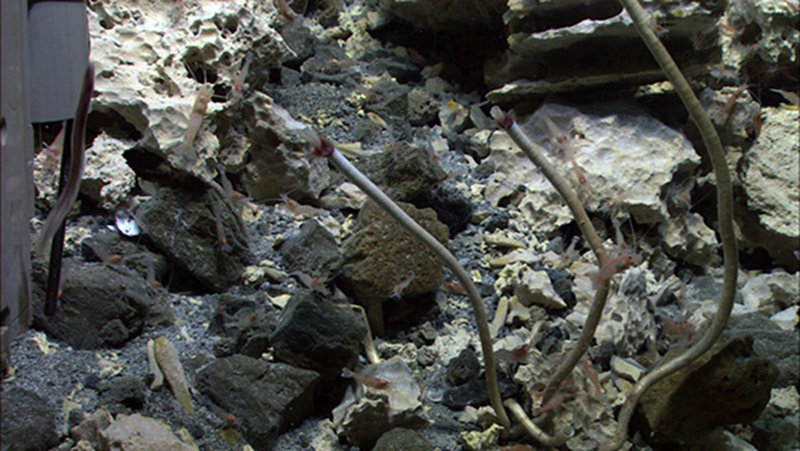We visited both the deepest and shallowest volcanoes of our expedition on the dives to Mata Fitu (2600m depth) and Niua North (700m depth); we were approximately 1.5 miles deep in the ocean at the first site, while less than a half a mile deep at the second. Mata Fitu appears to be split down the middle by a large fault created by movement of the ocean crust, while Niua N. is an arc volcano that has forced its way up through much older crust. Even more striking than the differences in geological settings were the observations made when we arrived on the seafloor. Mata Fitu exhibited a stunning display of high temperature hydrothermal activity, with pagoda-shaped chimneys everywhere. Niua N., on the other hand, had no chimneys. Instead it had jets of sulfur shooting out from many holes in the sediment-covered seafloor. When the sediments were disturbed, carbon dioxide was released into the water column as small droplets of liquid that rose up slowly above the remotely operated vehicle. Although both sites hosted biological activity, there were great differences between them. These two sites were as different as any two explored on our voyage of discovery.
